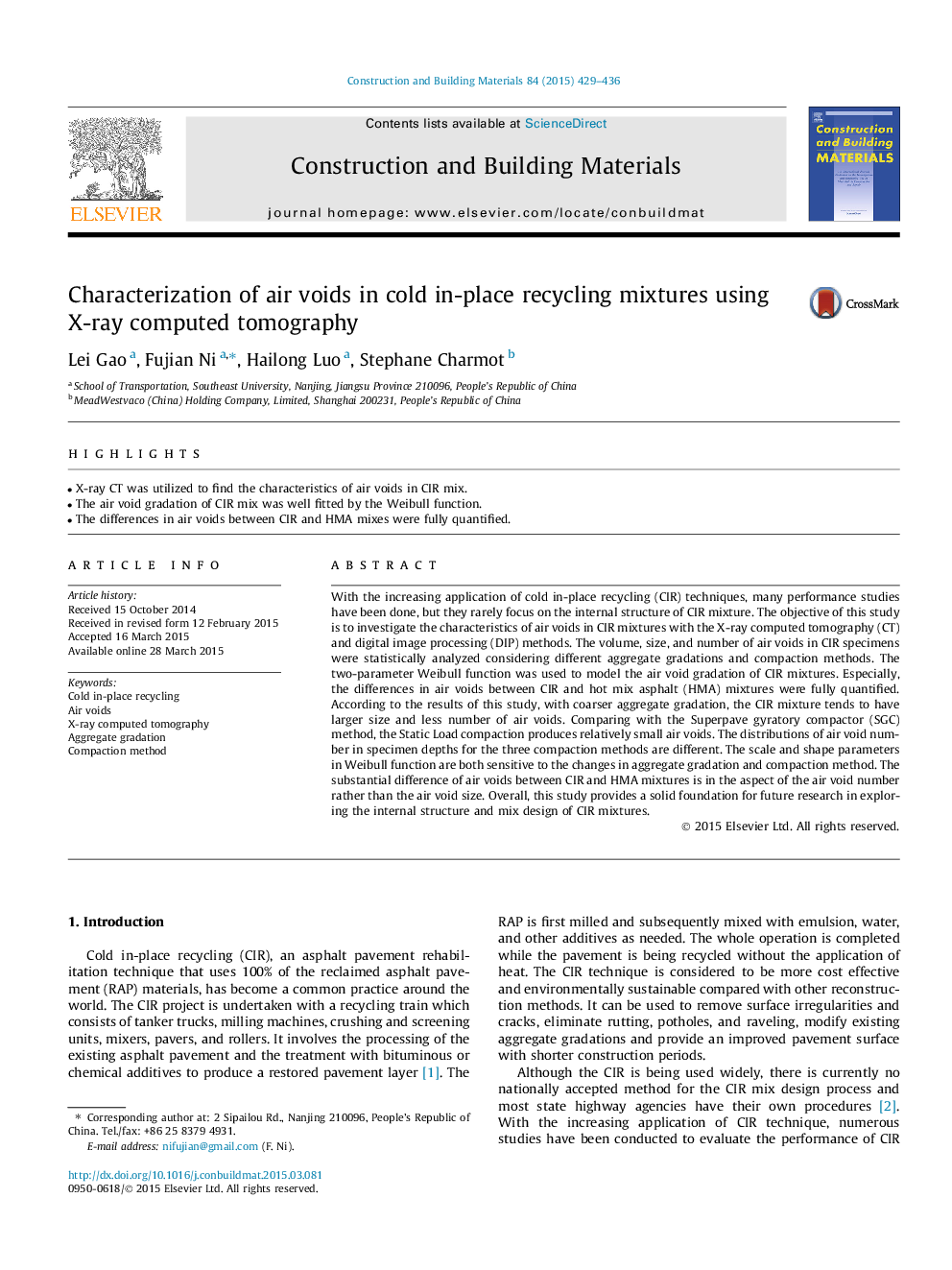| کد مقاله | کد نشریه | سال انتشار | مقاله انگلیسی | نسخه تمام متن |
|---|---|---|---|---|
| 257078 | 503574 | 2015 | 8 صفحه PDF | دانلود رایگان |
• X-ray CT was utilized to find the characteristics of air voids in CIR mix.
• The air void gradation of CIR mix was well fitted by the Weibull function.
• The differences in air voids between CIR and HMA mixes were fully quantified.
With the increasing application of cold in-place recycling (CIR) techniques, many performance studies have been done, but they rarely focus on the internal structure of CIR mixture. The objective of this study is to investigate the characteristics of air voids in CIR mixtures with the X-ray computed tomography (CT) and digital image processing (DIP) methods. The volume, size, and number of air voids in CIR specimens were statistically analyzed considering different aggregate gradations and compaction methods. The two-parameter Weibull function was used to model the air void gradation of CIR mixtures. Especially, the differences in air voids between CIR and hot mix asphalt (HMA) mixtures were fully quantified. According to the results of this study, with coarser aggregate gradation, the CIR mixture tends to have larger size and less number of air voids. Comparing with the Superpave gyratory compactor (SGC) method, the Static Load compaction produces relatively small air voids. The distributions of air void number in specimen depths for the three compaction methods are different. The scale and shape parameters in Weibull function are both sensitive to the changes in aggregate gradation and compaction method. The substantial difference of air voids between CIR and HMA mixtures is in the aspect of the air void number rather than the air void size. Overall, this study provides a solid foundation for future research in exploring the internal structure and mix design of CIR mixtures.
Journal: Construction and Building Materials - Volume 84, 1 June 2015, Pages 429–436
